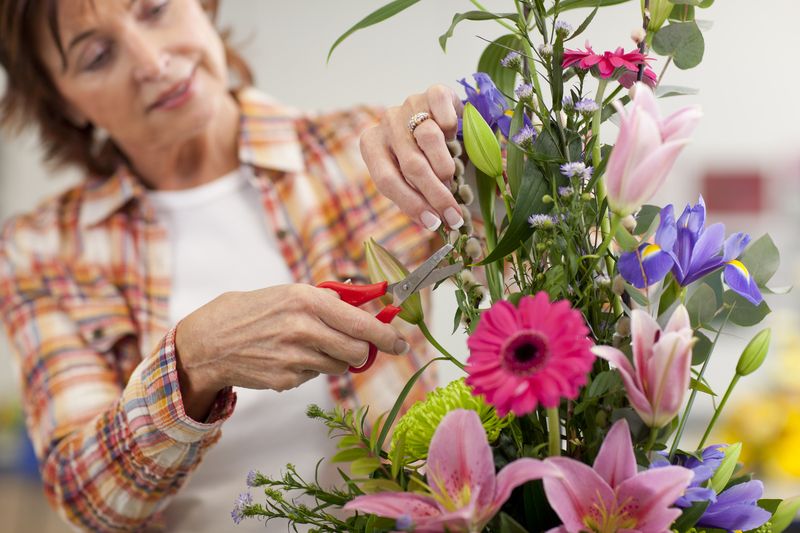Maximize Your Hydrangea's Potential with Care Tips
Posted on 22/08/2025
Maximize Your Hydrangea's Potential with Care Tips
Hydrangeas, with their lush blooms and vibrant hues, are among the most beloved ornamental bushes for gardens worldwide. Believe it or not, the secret to growing thriving hydrangeas extends far beyond simply planting and watering. Maximize your hydrangea's potential by mastering the right care techniques, soil conditions, pruning strategies, and ongoing maintenance tips. In this comprehensive guide, you'll discover all the essential and expert insights needed to help your hydrangeas shine season after season.
Understanding Hydrangeas: The Foundation of Proper Care
Before delving into specific hydrangea care tips, it's crucial to familiarize yourself with the various types of hydrangeas and their unique characteristics. Each species requires nuanced attention to reach its full potential.
Common Types of Hydrangeas
- Hydrangea macrophylla - Also known as Bigleaf Hydrangea, featuring mophead and lacecap varieties.
Known for their ability to change color based on soil pH. - Hydrangea paniculata - Panicle Hydrangea, noted for cone-shaped flower clusters and high sun tolerance.
- Hydrangea arborescens - Smooth Hydrangea, with round white or pink blooms and incredible cold hardiness.
- Hydrangea quercifolia - Oakleaf Hydrangea, admired for its oak-shaped leaves and rich autumn coloration.
- Hydrangea serrata - Mountain Hydrangea, a compact species ideal for smaller gardens.
Tip: Identify your hydrangea's species to tailor your care strategy more effectively and maximize its potential.

Essential Hydrangea Planting Tips
Your hydrangea's journey to greatness begins the moment it's planted. Here are crucial elements to get your hydrangea off to the best start:
Choosing the Right Location
- Sunlight: Most hydrangeas thrive in partial sun to light shade. Too much sun can scorch leaves; insufficient sunlight may limit blooming.
- Protection: Plant in locations shielded from strong winds and the harsh afternoon sun, especially in hotter climates.
- Space: Allow enough room for air circulation, which helps prevent fungal issues.
Preparing the Soil
- Drainage: Well-draining soil is non-negotiable for hydrangeas. Amend clay-heavy soil with compost or organic matter.
- pH Levels: For Bigleaf Hydrangeas, soil acidity affects flower color. Acidic soils (pH below 6) produce blue flowers, while alkaline soils (pH above 7) yield pink blooms.
- Enrichment: Mix in aged compost or slow-release fertilizer before planting to supply essential nutrients.
Hydrangea Care Tips: Watering and Fertilization
Hydration and nourishment are two critical factors to ensure your hydrangeas grow lush and healthy. Below, we break down the best care tips for hydrangeas to promote robustness and vibrant blooms.
Watering Your Hydrangeas
- Consistency: Hydrangeas demand regular watering, especially during dry spells. Check the top 1-2 inches of soil for moisture weekly.
- Morning Ritual: Water early in the morning to minimize evaporation and allow leaves to dry, reducing disease risk.
- Mulching: Apply a 2-3 inch layer of mulch around the base to conserve moisture and regulate temperature.
- Warning: Overwatering can cause root rot--ensure soil dries slightly between waterings.
Fertilizing Effectively
- Timing: Feed hydrangeas with a balanced, slow-release fertilizer in spring as new growth appears.
- Type: Use fertilizers designed for woody plants, or a specialty hydrangea formula to ensure optimal health and flower performance.
- Caution: Over-fertilizing, particularly with high nitrogen, may yield lush foliage at the expense of flowers.
Pruning Hydrangeas for Maximum Bloom
Correct pruning is vital to maximizing your hydrangea's flowering potential. Since different types of hydrangeas bloom on either old or new wood, pruning methods must be species-specific.
General Pruning Guidelines for Each Type
-
Bigleaf (H. macrophylla) & Mountain (H. serrata):
- Bloom on old wood (growth from the previous year).
- Prune immediately after flowering, before the end of July.
- Remove spent blooms and weak or crossing stems to encourage new growth.
-
Smooth (H. arborescens) & Panicle (H. paniculata):
- Flower on new wood (current season).
- Prune in late winter or early spring, cutting back to vigorous buds.
- Allows for abundant spring growth and maximized blooms.
-
Oakleaf Hydrangea:
- Requires minimal pruning--focus on removing dead wood after blooming.
Extra Tip: Always use clean, sharp pruners to prevent disease transmission!
Optimizing Hydrangea Color and Size
Unlock one of the most fascinating aspects of hydrangea gardening: controlling flower color and maximizing size.
How to Change Hydrangea Flower Color
- To Encourage Blue Blooms: Add aluminum sulfate to acidify soil, keeping pH below 6.0.
- To Produce Pink Flowers: Incorporate garden lime into the soil to raise pH above 7.0.
- Note: Only Bigleaf and Mountain hydrangeas respond noticeably to soil pH manipulation with color changes.
Maximizing Bloom Size
- Practice regular deadheading (removing spent blooms) to channel plant energy into producing larger, more robust flowers.
- Feed with phosphorus-rich fertilizer in early spring.
- Maintain consistent moisture and avoid root competition by mulching and weeding.
- Proper pruning and spacing allow for better air flow and energy distribution.
Dealing with Common Hydrangea Problems
Even the best-cared-for hydrangeas encounter occasional issues. Understanding the symptoms and knowing how to address them ensures your plants stay strong and resilient.
Pests and Diseases
- Powdery Mildew & Leaf Spot: Avoid overhead watering, ensure good air circulation, and remove affected foliage. Apply fungicide if necessary.
- Aphids & Spider Mites: Spray a strong stream of water on infested leaves or use insecticidal soap.
- Root Rot: Ensure well-draining soil and avoid waterlogged conditions.
- Winter Damage: For cold-sensitive hydrangeas, mulch heavily in late fall and consider burlap wraps for added protection.
Seasonal Hydrangea Care Checklist
Maximizing your hydrangea's potential means providing specific care at each stage of the gardening year. Follow this seasonal guide for consistent, spectacular results.
Spring
- Prune (species dependent)
- Apply balanced fertilizer
- Test and amend soil pH if color modification is desired
- Mulch to conserve moisture and suppress weeds
Summer
- Monitor soil moisture - water deeply during dry spells
- Deadhead spent blooms to encourage continued flowering
- Watch for pests and diseases, treating as needed
Autumn
- Clean up fallen leaves and prune out any dead wood
- Apply a final layer of mulch for winter protection
- Reduce watering as temperatures drop
Winter
- Protect roots, especially for new or cold-sensitive varieties, with extra mulch or burlap covers
- Avoid disturbance; let plants rest until spring
- Inspect for winter damage before next season's growth
Expert Hydrangea Care Tips: Secrets for Stunning Blooms
- Never fertilize late in the season--it encourages tender growth vulnerable to frost.
- Install drip irrigation for effortless, even moisture delivery.
- Cut hydrangeas for indoor arrangements in the early morning and place them in fresh, cool water right away.
- Monitor for nutrient deficiencies by watching for discolored, yellowing leaves and adjust feeding schedule as needed.
- Rotate mulch materials annually to avoid disease build-up in the soil.

Frequently Asked Questions About Hydrangea Care
Q: Why are my hydrangeas not blooming?
A: The most common causes are improper pruning (removal of old wood), late frosts that kill flower buds, or lack of sunlight. Make sure you're pruning only when appropriate for your hydrangea type.
Q: How do I revive a wilted hydrangea?
A: Hydrangeas are sensitive to heat and drought. Provide deep water to rehydrate roots, add mulch, and move to shade if in a pot.
Q: Are hydrangeas poisonous?
A: Some parts of hydrangeas contain cyanogenic glycosides, which are toxic if ingested by pets or children. Always plant with care.
Final Thoughts: Unlock Your Hydrangea's Full Potential
By following these hydrangea care tips--from the right soil preparation and pruning techniques to comprehensive seasonal care--you can truly maximize your hydrangea's potential. With a bit of attention and the right know-how, your hydrangeas will flourish with show-stopping blooms, healthy foliage, and resilience year after year. Remember, the rewards of hydrangea gardening come from mindful nurturing and ongoing observation.
Ready to transform your garden? Implement these expert strategies and watch your hydrangeas reach their most spectacular form!
Latest Posts
Secret Lives of Tulips: 7 Facts You Never Heard Before
Make Birthdays Bloom with Stunning Flowers
Maximize Your Hydrangea's Potential with Care Tips






